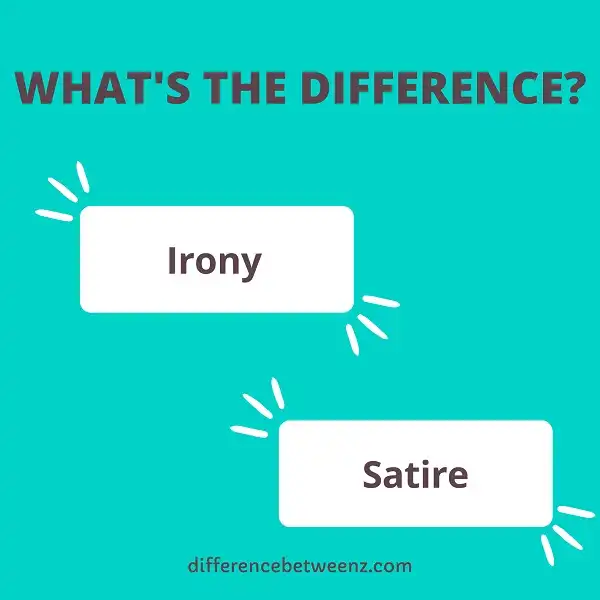Irony and satire are often interchangeably used in casual conversation, but there is a clear distinction between the two. Irony is the use of words to convey a meaning that is opposite of its literal meaning, while satire uses humor to expose the folly or vices of people or institutions. Though they share some similarities, irony and satire have their own unique purposes in discourse.
What is Irony?
Many people use the word “irony” interchangeably with “coincidence.” However, there is a big difference between the two. Coincidences are chance occurrences that have no relation to each other, while irony is when two seemingly unrelated things are actually connected. There are three main types of irony: verbal, situational, and dramatic. Verbal irony is when a person says one thing but means the opposite. Situational irony is when what actually happens is the opposite of what was expected to happen. And the dramatic irony is when the audience knows something that the characters do not. Irony can be used for both serious and humorous purposes. So next time you’re tempted to call something a coincidence, think about whether it might actually be ironic instead.
What is Satire?
Satire has been defined in a variety of ways, but most commonly, it is used to refer to a type of literature that uses humor or wit to expose the shortcomings of individuals, groups, or society as a whole. Satire is often used interchangeably with irony, but there are important distinctions between the two. Satire is typically intended to be humorous, while irony is often used more for dramatic effect. Additionally, satire often relies on hyperbole or exaggeration to make its point, while irony usually involves a contrast between what is expected and what actually occurs. Ultimately, however, both satire and irony can be powerful tools for challenging prevailing assumptions and beliefs.
Difference between Irony and Satire
Irony and satire are often used interchangeably, but there is a distinct difference between the two. Irony is the use of words to convey a meaning that is the opposite of what is actually said. For example, if a character in a play says “I’m so happy!” but has a frown on their face and tears in their eyes, that would be considered irony. Satire, on the other hand, is the use of humor, irony, exaggeration, or ridicule to expose or critize folly or vice. In essence, it is using wit to make fun of something or someone. An example of satire would be a comedy sketch that makes fun of a politician by exaggerating their worst qualities. While both irony and satire can be used to point out the flaws in people or situations, satire is usually more lighthearted and designed to provoke laughter.
Conclusion
Although irony and satire are often used interchangeably, there is a clear distinction between the two. Irony is more subtle, while satire is more overt. Satire aims to provoke laughter or criticism by ridiculing the shortcomings of people or institutions, while irony can be used to reveal greater truths about human nature. It’s important to understand the difference between these two devices so that you can use them correctly in your writing.


